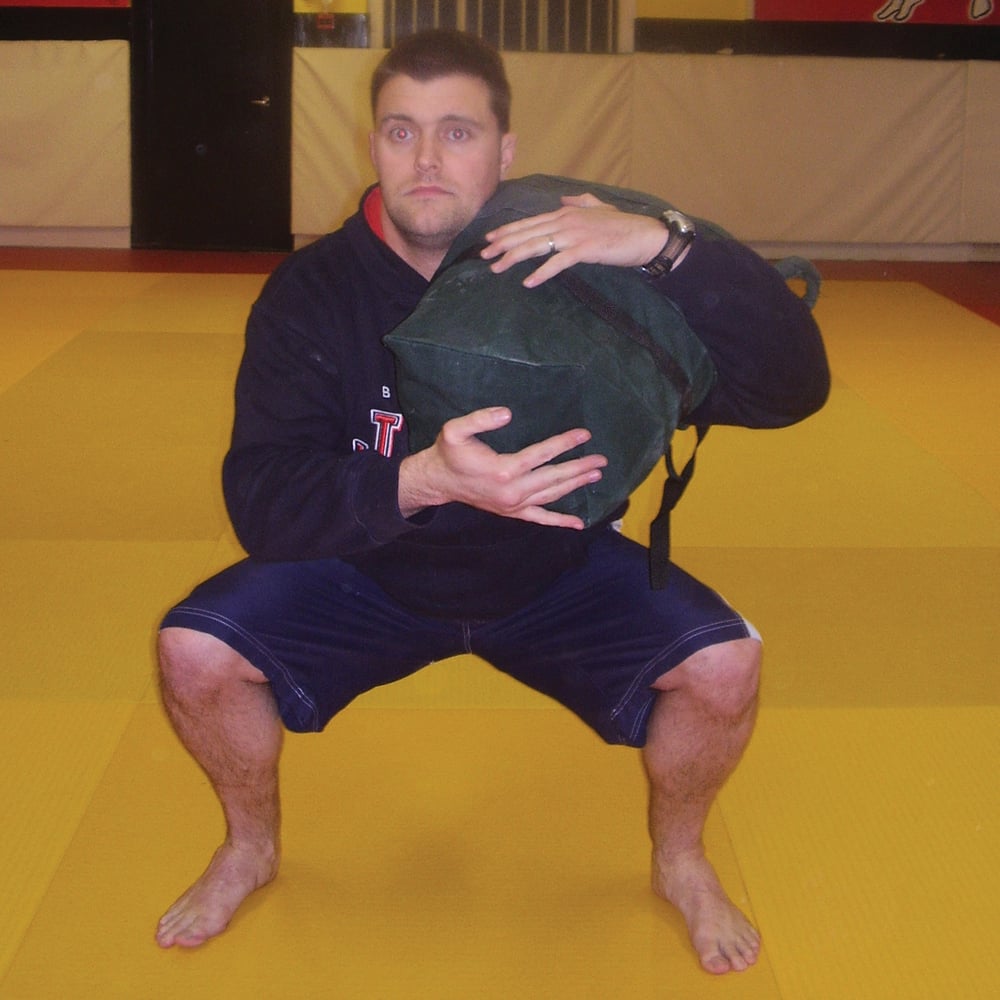
Issue 026
June 2007
In this month’s issue we’re going to deal with the squat. Now unlike last month’s featured exercise the Zercher Lunge, everyone is familiar with the squat in its various forms, be it bodyweight, back squat, front squat, Hack squat, split squat, dumbbell, kettlebell, or even one-legged squats. In gyms all over the world the most common version you’ll see is the back squat, where the barbell rests on the traps.
Which muscles are used?
It’s not known as the king of exercises for nothing. Nearly all the lower body muscles are worked in this one movement. Although the quads take most of the punishment, the glutes, hamstrings and surrounding hip musculature get hit too.
How functional is the squat?
Any athlete who requires lower body strength, power and endurance needs to perform some type of squatting movement. It’s no different for you MMA’ers either. If you’re not squatting, you are doing yourself a massive disservice! Strong legs will add power to your kicks, punches, takedowns and ground game. Many people shy away from legwork simply because it’s harder to perform than most exercises.
How many big, muscle-bound steroid abusers have you seen who look very intimidating up top, but seem to train at a gym where legs are a no-no? Squat racks are used more for hanging towels on than beasting the legs! Anyone involved in combat sports needs also to work the legs unilaterally, i.e. using lunges or one-leg squats (pistols) as you’ll find yourself in a position where you are posted on one leg at multiple points throughout a fight.
Studies have shown that heavy squats can increase sprint speed and explosiveness. This would seem to ring true when you look at any sprinting athlete. In fact, super-sprinter Linford Christie could squat well over 200kgs in his prime!
How do we do it?
Easy enough; think about sitting in a chair. The movement starts at the hip joint regardless of which variation is being used. You simply push your backside back and down as if sitting down and the knees will bend when they need to.

Your knees should be over the middle of the feet and not over the toes. The head should stay level and look forward. The knees should not track inward or outward as this can cause injuries! The descent should continue until the thighs are parallel with the floor, upon which the upward drive comes through the middle of the feet and not the toes.
In a nutshell, that’s it for the squat. If you are using this technique, great! Keep it going and try to implement the variations described just to keep your body guessing. If you’re not using the squat, you’re doing yourself a massive injustice. Also you’ll limit what you can achieve in your chosen sport. You don’t need to have quads like Tom Platz, if anything this can be counter-productive, but your legs should be capable of performing extended periods of work relating to your sport.

Try the squat on for size, implement some sandbag Zercher squats or keg squats into the programme and watch your performance increase exponentially.
Barry can be contacted with queries of questions by email at [email protected]. A Level Two UKKA-certified kettlebell instructor, his is available for workshops and seminars, and you can check out his DVD at www.grapplefit.com for more ideas and squat variations.
...










